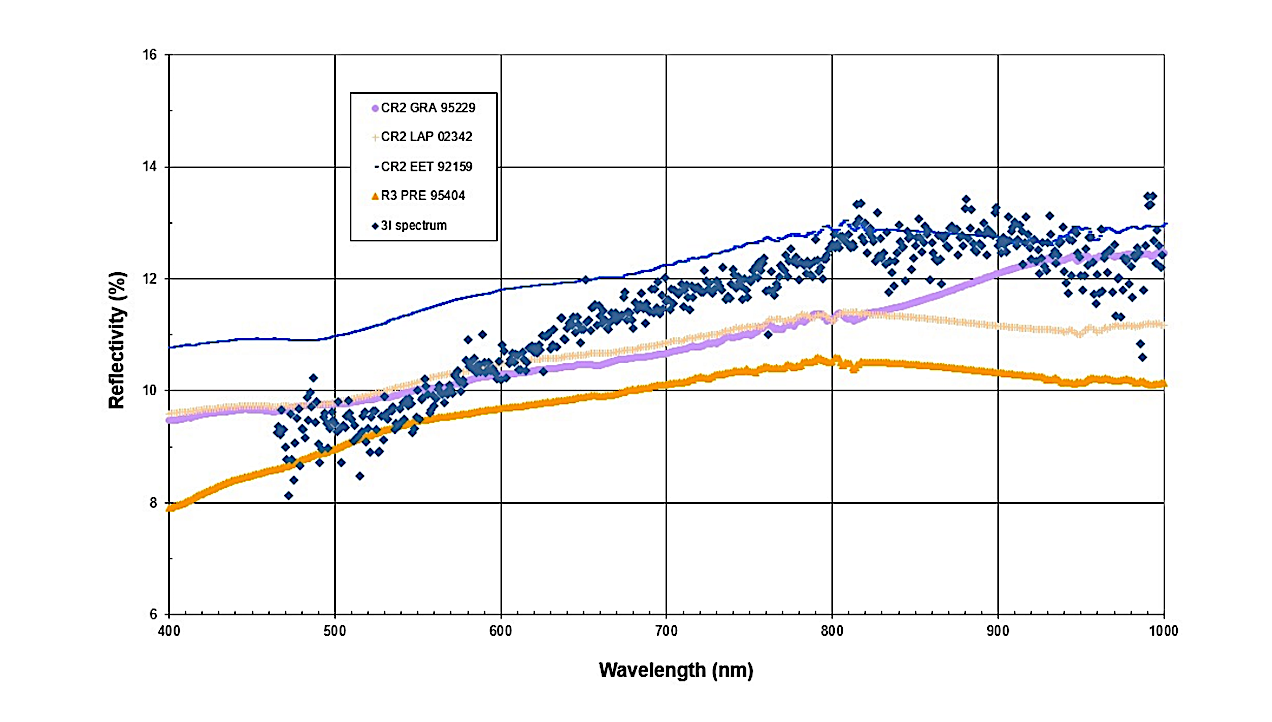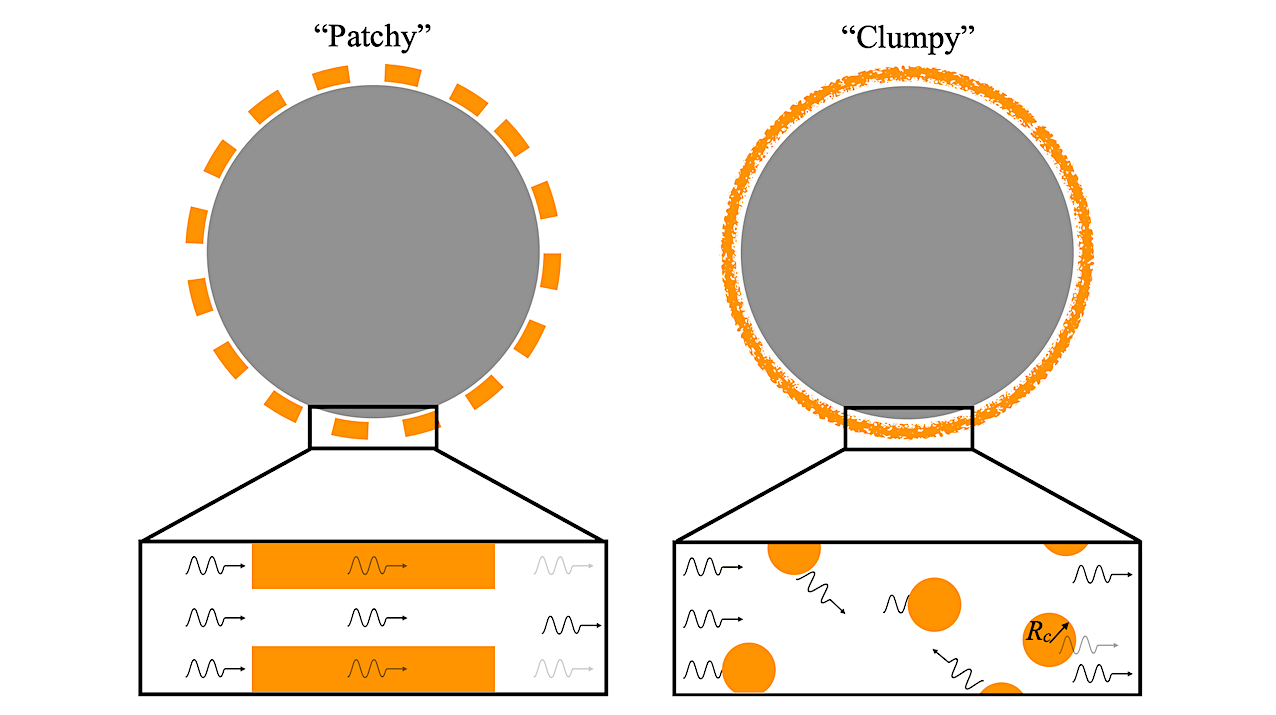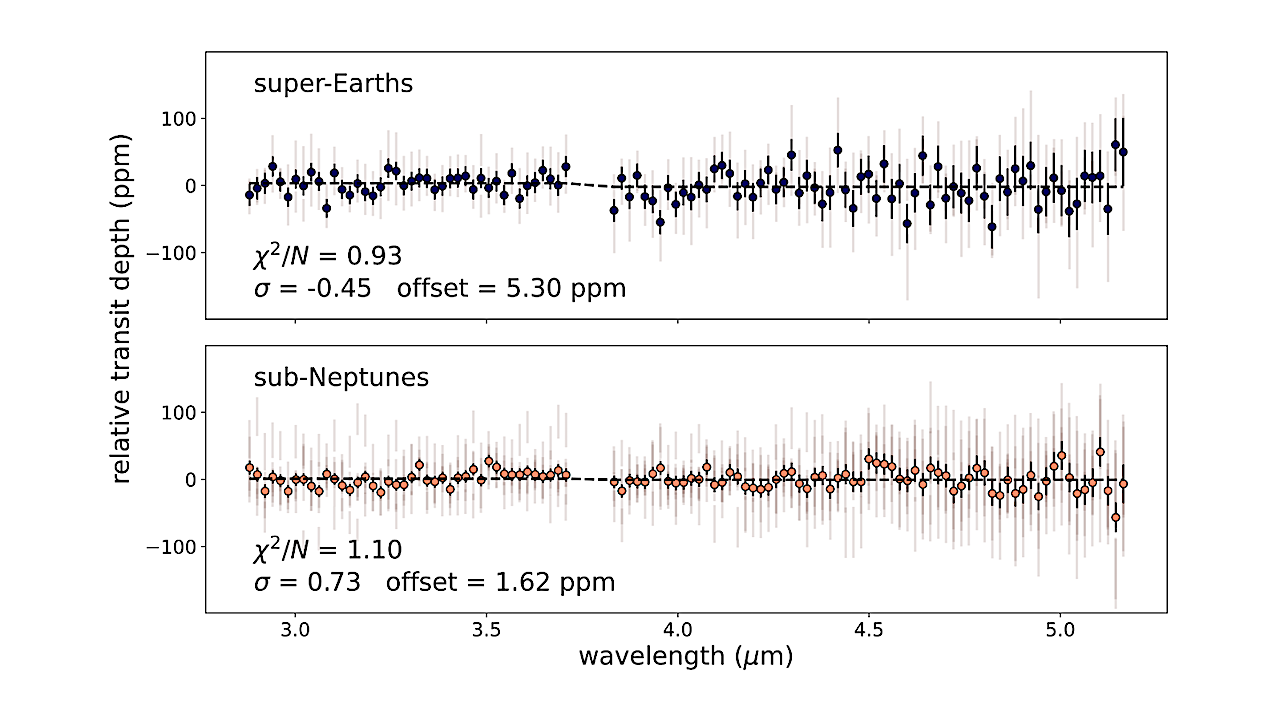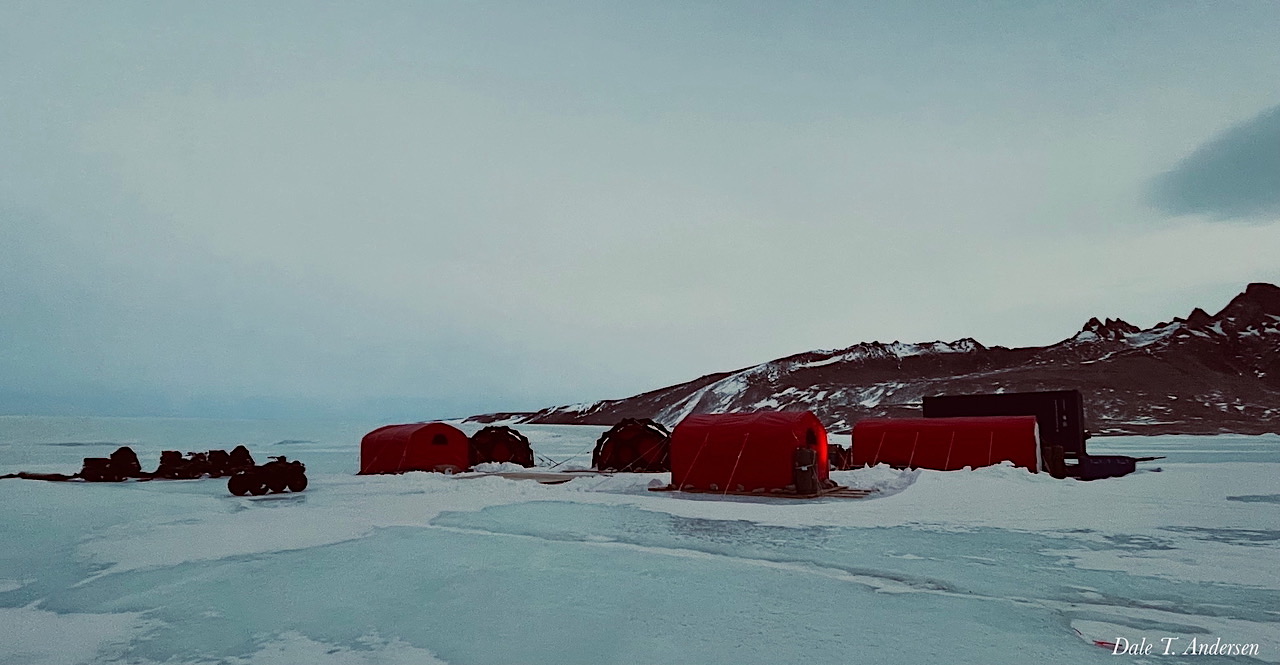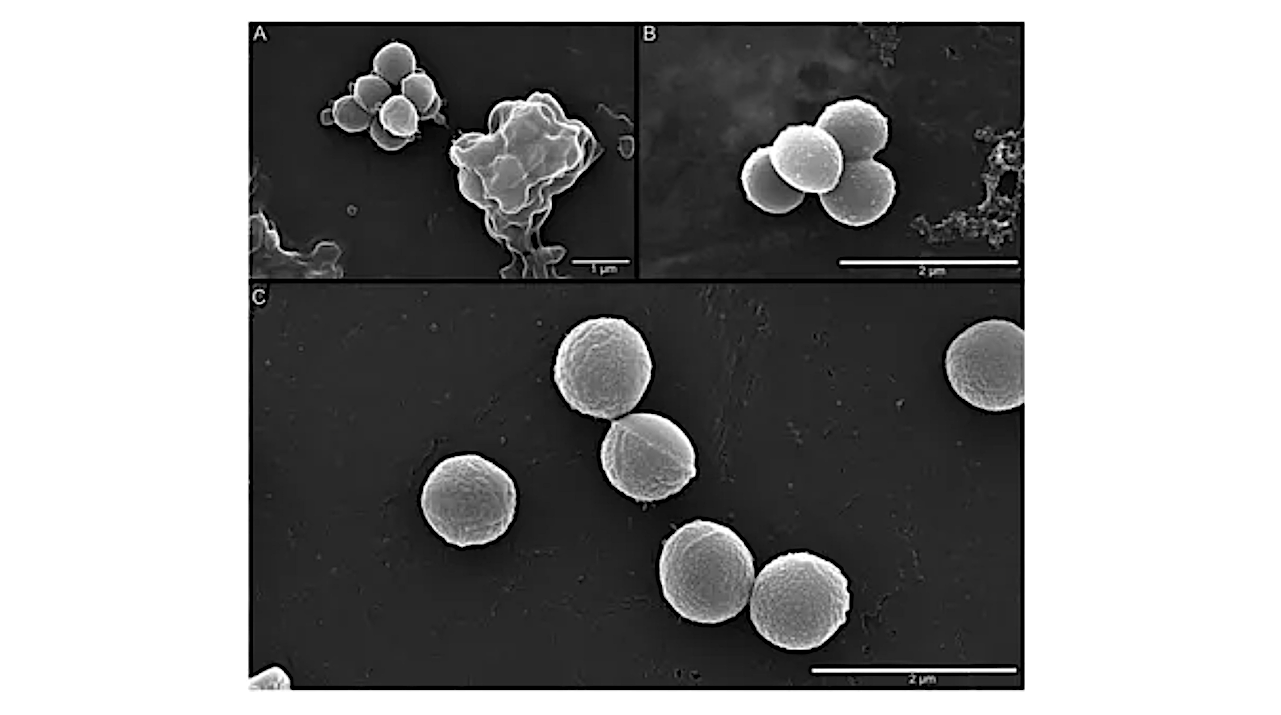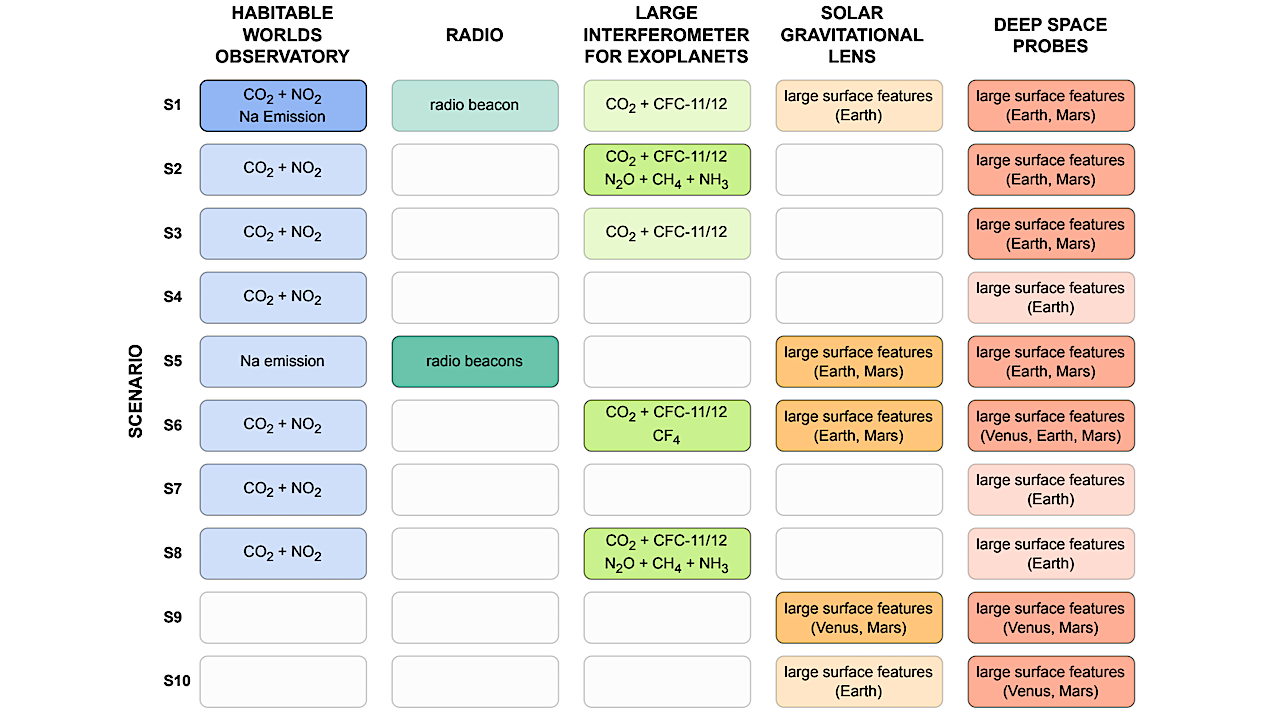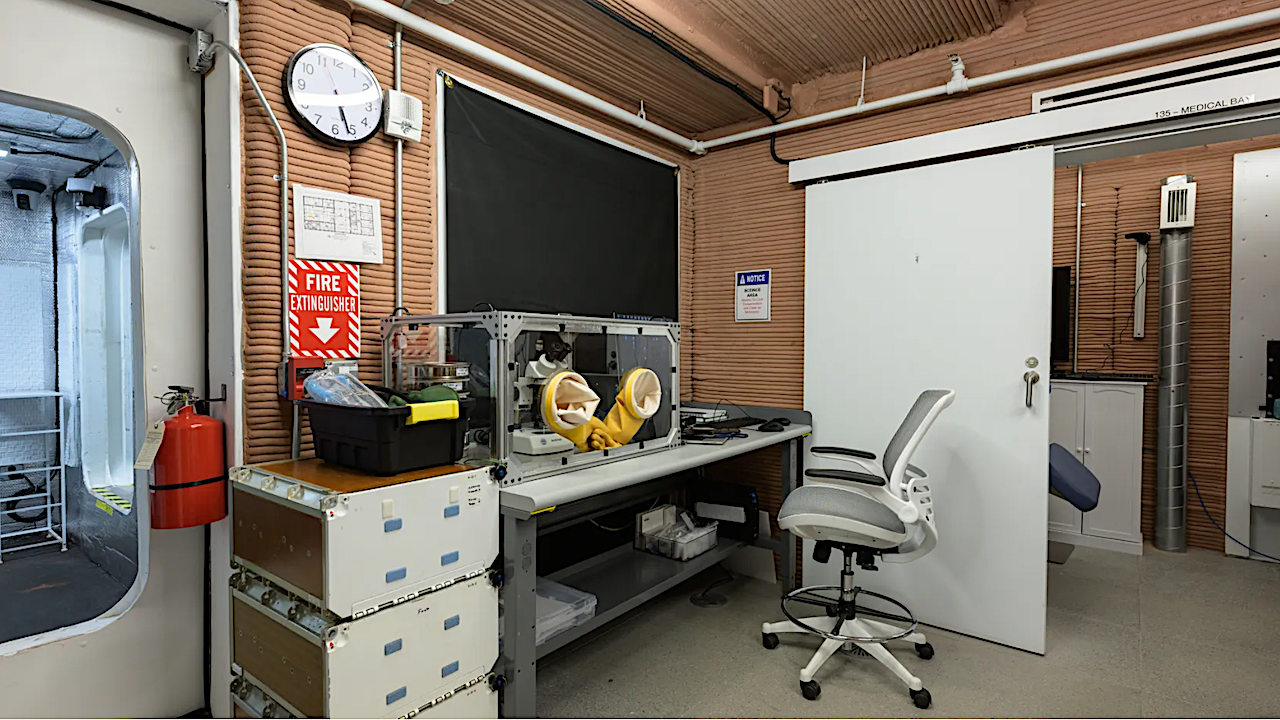3I spectrum (dots) and the reflectance spectra of three CR and one R chondrite discussed in the text. — astro-ph.EP 3I/ATLAS is only the second confirmed cometary object known to
Astrobiology11- Page
Schematic cartoon showing the difference between the patchy and clumpy formalisms, with a zoom in to the transmission geometry (where the star is to the left, and the observer to
Composite spectra for the five super-Earths (top) and two sub-Neptunes (bottom). The dashed line represents the best-fit flat line model including an offset between NRS1 and NRS2, and the χ
Base Camp Infrastructure on the ice at Lake Untersee, Antarctica — Dale Andersen Keith’s note: Astrobiologist Dale Andersen will be back in Antarctica at Lake Untersee from early January through
Base Camp Infrastructure on the ice at Lake Untersee, Antarctica — Dale Andersen Keith’s note: Astrobiologist Dale Andersen will be back in Antarctica at Lake Untersee from early January through
SEM images of A. agilis Ant-EH-1 grown at (A) 25 °C; (B) 5 °C; (C) −5 °C. — Frontiers via PubMed Arthrobacter are commonly isolated from cold soil environments globally, including those that
SEM images of A. agilis Ant-EH-1 grown at (A) 25 °C; (B) 5 °C; (C) −5 °C. — Frontiers via PubMed Arthrobacter are commonly isolated from cold soil environments globally, including those that
Astrochemist Julia Santos — Universiteit Leiden How do atoms and molecules end up forming planets? That’s what astrochemist Julia Santos studied during her PhD. She discovered the dominant process behind
Summary of technosignature detectability with future missions for each scenario. Darker colors indicate where multiple technosignatures in a scenario are observable by a mission. — astro-ph.EP The search for technosignatures
During the one-year analog mission, crew members will participate in various activities, including sample collection and analysis utilizing a glovebox. Bill Stafford/NASA [Federal Register Volume 90, Number 225 (Tuesday, November
-
 012024 in Review: Highlights from NASA in Silicon Valley
012024 in Review: Highlights from NASA in Silicon Valley -
 02Panasonic Leica Summilux DG 15mm f/1.7 ASPH review
02Panasonic Leica Summilux DG 15mm f/1.7 ASPH review -
 03From Polymerization-Enabled Folding and Assembly to Chemical Evolution: Key Processes for Emergence of Functional Polymers in the Origin of Life
03From Polymerization-Enabled Folding and Assembly to Chemical Evolution: Key Processes for Emergence of Functional Polymers in the Origin of Life -
 04How New NASA, India Earth Satellite NISAR Will See Earth
04How New NASA, India Earth Satellite NISAR Will See Earth -
 05And Thus Begins A New Year For Life On Earth
05And Thus Begins A New Year For Life On Earth -
 06Astronomy Activation Ambassadors: A New Era
06Astronomy Activation Ambassadors: A New Era -
07SpaceX launch surge helps set new global launch record in 2024


